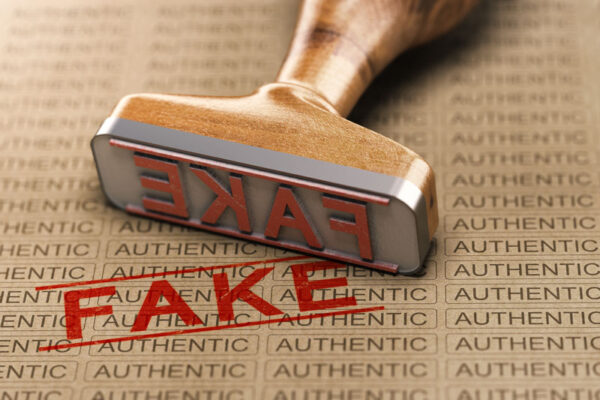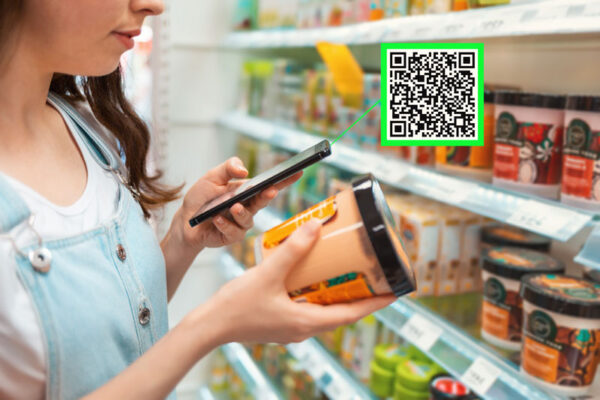Word on the Street: Hot topics in anti-counterfeiting from IACC 2022
IACC’s annual conference is back on after two years off, and things have changed. Here’s what people were talking about this year.
After a two-year hiatus—due to Covid—the IACC Annual Conference was back this year, and it was an overwhelming success. The conference, hosted by International AntiCounterfeiting Coalition, attracted more than 550 attendees from 45 countries around the globe. It featured more than 80 IP expert speakers, 5 panel sessions, and 17 unique workshops. The event also offered attendees the ability to do a deep dive on specific topics with options like the SME (Small/medium size Enterprise), BP Enforcement, or LatAm tracks.
Past conferences have covered a fairly broad range of topics from the illicit activity on e-commerce websites to customs and border patrol processes and everything in between. This year, however, was a little different. Despite the fact that the IACC has been around since 1979, the 2022 conference felt like a reset.
This vibe isn’t all that surprising given how long we’ve been apart and how much has changed since we last met. A lot of the change is, of course, due to Covid, which was the root cause of transformed buying behaviors, supply chain disruptions, and the overall mass shift to online purchasing. And each of these things created its own domino effect. Supply chain issues, for example, made it impossible for legitimate brands to keep up with demand, which in turn indirectly drove counterfeiting activity in every category.
Because of recent events, a lot of companies are stepping back and taking a good, hard look at exactly what they are (or are not) doing to protect their brands. They are strategizing about which changes need to be made to address the evolving counterfeiting concerns of the post-Covid era.
Our team attended some great presentations and panels, but—perhaps more importantly—we had some great 1:1 conversations that provided on-the-ground insight into what people are really thinking about as we all move forward into this new frontier together. Here is a summary of some of the trends that we heard from a variety of folks and organizations.
Keep It Simple
Over the last decade, the trend has been to employ increasingly sophisticated and complex security solutions, many of them incredibly covert. This trend took hold based on the assumption that the more complicated a solution is, the more secure it is. However, while that theory seems plausible conceptually, it falls apart in the real world.
The challenge is that unless you’ve got all the right hardware, software, and expertise, complexity quickly becomes a detriment to a solution. It makes a solution unusable. When there is a lack of necessary tools or trained personnel, it becomes incredibly difficult (and time consuming) to authenticate a product. Ultimately, the authentication doesn’t happen, which obviously works in favor of the counterfeiter, not the brand.
The other issue that crops up with overly complex brand protection solutions is finicky technology that requires near-perfect conditions to work as intended. If there’s bleeding in a bar code, incorrect magnification, or blur due to camera motion, the results won’t be accurate.
What we heard from the people we talked to is that what companies want today are solutions that are simple, easy, and intuitive. They want solutions that work without anyone—companies or consumers—having to jump through hoops to get accurate results.
Keep It Reliable, Scalable, and Affordable
On a related note, in addition to unhelpful complexity, the industry is also coming to terms with technology that has been unable to stand the test of time or weather the changes brought about by the pandemic.
For example, before Covid NFC (near-field communication) solutions were widely promoted as a great authentication method. And they did, in fact, have some solid applications. However, over the past couple of years, their efficacy and viability has been substantially compromised by unanticipated real-world factors. Supply chain issues have made it nearly impossible to acquire the necessary chips, and even when they are available, the cost is very high because the components have become so expensive. In addition, the solution’s reliability is only as good as the chip’s connection to an antenna. If the connection is broken, the solution is useless.
This isn’t to say that NFCs won’t make a comeback under different circumstances. It’s just a good example of why it’s important to stay on top of emerging brand protection technologies and strategies. Relying too much on traditional tactics is dangerous. Even more recently developed technologies can fail to deliver the desired results if there are too many moving parts, especially if those moving parts rely on third-party components.
Today’s companies need brand protection solutions they can depend on despite changing circumstances. They need solutions that can scale efficiently, and keep up as a brand expands their product line, audience, or geographic distribution. And they need solutions that make sense from a budget and profitability standpoint.
Keep It Flexible
It’s often said that the key to long-term success is the ability to adapt. In an industry like ours—where the bad actors are always devising some new scheme—it’s especially important to be able to pivot quickly.
The truth is, every company has unique brand protection needs. There isn’t a one-size-fits-all solution that will work across the board. Some brands only need a very basic solution, like a QR code that gives the consumer access to additional information or usage instructions. Other companies need much stronger security and authentication.
One of the main challenges companies face with brand protection is that it isn’t something they can handle on their own. Because it’s a very specialized—and always evolving—expertise that’s expensive and time consuming to develop, very few companies have in-house resources. Instead, many companies attempt to implement standardized third-party solutions with existing manufacturing and packaging processes. This strategy often creates major integration hurdles that are difficult to overcome without slowing down the production line or having to coordinate partner accommodations up and down the supply chain. After all of this, many companies end up adopting a “do-nothing” strategy because the whole ordeal is just too painful to manage. Which opens the door even wider for counterfeiters.
The most efficient and effective way forward is to partner with a third-party vendor who has experience across multiple brands and industries, and who can deliver bespoke solutions that can be woven into existing processes with minimal impact.
Many of the people we talked to think about hiring a brand protection partner the same way they think about hiring an SEO agency. In both cases, they are eager to work with someone who is a true expert in a niche space, someone whose job it is to stay ahead of the curve on news, trends, and innovations. They understand the value of working with someone who has successfully managed a wide variety of situations and challenges, and is able to make a company more agile in its fight against counterfeiters.
VerifyMe Solutions that Got People Excited
Of course, one of the reasons to attend a conference is to get feedback on your own products and services directly from the people who need them. There were two VerifyMe solutions that consistently made the people we talked to sit up and take notice.
VerifyMe Engage™
VerifyMe Engage
Using VerifyMe Engage™, a brand is able to make authentication a seamless part of the consumer engagement process. When a consumer scans a code to retrieve information or a reward, the scan automatically pulls up a pre-filled serial number that it has extracted from the code. The consumer then asks to authenticate the product, and will either be congratulated on purchasing an authentic item, or alerted that they have bought a suspect product. At the same time, the authentication data is sent back to the company, where it is aggregated with all the other pieces of individual consumer data to provide a holistic picture of what is happening in the market—not only where counterfeit items are cropping up, but also information about sales trends and more.
And while consumer engagement with QR and other types of codes has not been historically high, the addition of a meaningful incentive from the brand can increase engagement exponentially. In addition, since Covid, consumers have become much more aware of and concerned about counterfeit products. Being able to actively participate in authenticating products they’ve bought helps consumers feel safer, and also makes them feel good about what the brand is doing to protect them. It’s a win-win.
VerifyCode™ 2D Glyphs
Since every solution we design is customized to the specific needs of the client, we use a variety of our proprietary technologies in a variety of configurations depending on each situation. VerifyCode™ is a powerful technology on its own—one that can deliver a simple, easy, and intuitive experience while still providing extremely high security—and it’s also an integral part of the VerifyMe Engage™ solution.
On the surface, VerifyCode™ is similar to a QR code. But don’t be fooled. This is not your mother’s QR code. In fact, it’s more accurately called a 2D smart glyph.
Rather than being open source (and more easily hacked) like traditional QR codes, VerifyCodes™ are heavily encrypted and can only be read using a proprietary decoding technology. This secure technology can easily be embedded into an existing brand’s app, and—by extension—into the consumer’s existing brand experience.
The technology makes code reuse impossible, which is a very effective way of thwarting counterfeiters. Once a consumer scans a VerifyCode™ to register a product, that consumer’s smart phone becomes the sole holder of that code, and the code is “locked out,” meaning that if anyone else attempts to use that same code, they will receive a message that the code has already been used (or whatever messaging the brand prefers). At the same time, the authentication data (including date, time, and GPS location) is sent back to the brand.
Using these proprietary codes and secure apps, brands can easily access all the data within the code, and then tie that information into additional solution components like track-and-trace. There are many possible use cases within a single code.
Change Is Inevitable. Adaptation is Critical.
The bottom line is this: the brand protection industry is changing. And it’s changing more rapidly than ever before. We knew this before we attended the IACC Annual Conference, but the conversations we had and the chatter we heard really drove the point home.
Companies are reevaluating their brand protection strategies, and they are recognizing that older technology has become obsolete. It’s time to step into the modern age with solutions that have kept pace with counterfeiters.
Two years ago, not many companies had heard of VerifyMe. We were a smaller, up-and-coming player who hadn’t yet made a big splash. Today, numerous Fortune 100 companies rely on our solutions to protect their brands, and a broad range of highly respected brands sought us out at the conference to learn more about what’s happening in the market now and what’s coming next.
We’re thrilled to be bringing some truly innovative solutions to the table, solutions that are simple, easy, and intuitive, but that offer reliability and superior brand protection across a wide range of use cases.


